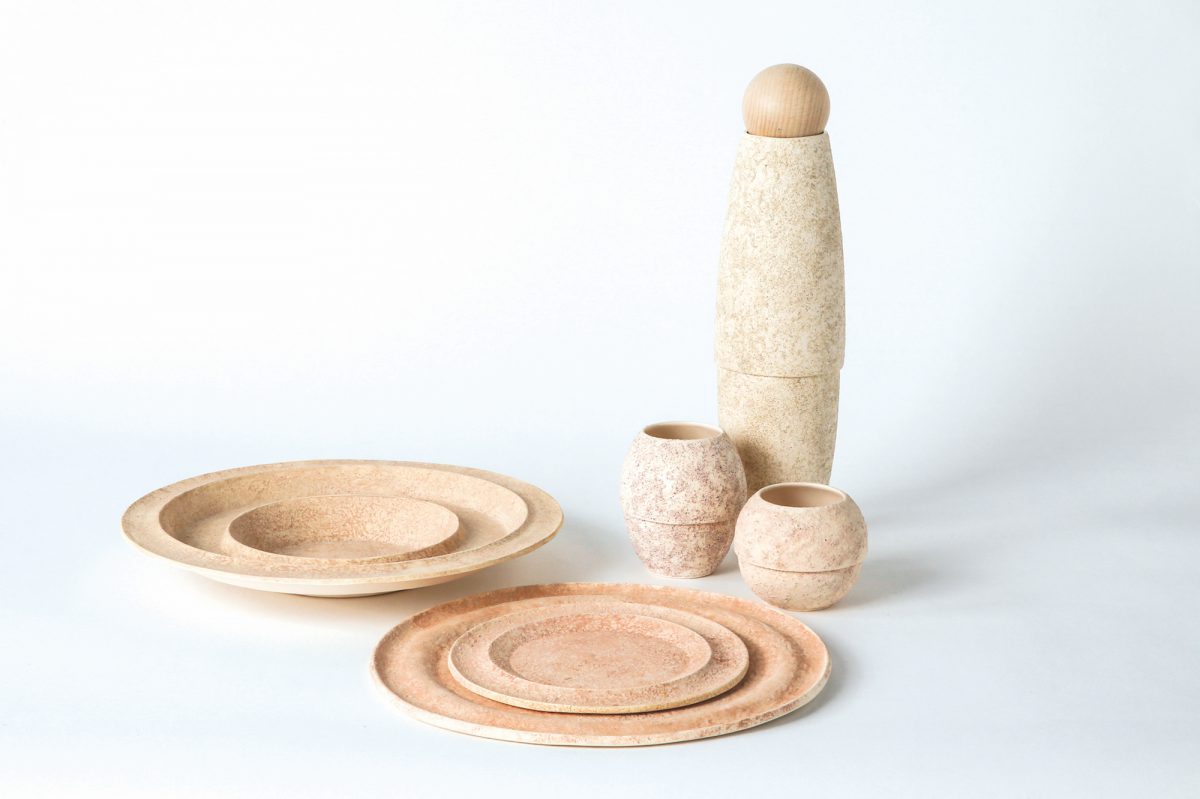
The Hanseatic League was officially founded in 1358 and has a rich history. It didn’t only left behind traces of economic trade but also mutual political interests. It was one of the first ways to unify European countries. Boundaries were not important. This is what I wanted to explore through Hanzeware. It is a new insight into one of the oldest institutions of Europe.
It was a search for a simple formal language, which is clearly a family. The shape facilitates the passing of the crockery. Crockery as a symbol for the passing of goods. It creates an intimate form of space between two bodies during the passing.
The link with the cities is strengthened by the using of locally mined sand from eight of the most important cities in the Hanseatic period. It is used as a glaze. The material provides a sense of belonging, because there is a part of the city itself in each piece of crockery that will be made. The skin varies per item, but below it is the same porcelain. Just as people differ from the outside, but on the inside we are all the same. Hanzeware is a discussion about whether to open or not to open up our borders to outside influences.
This is what needs to be discussed and celebrated. Being united and connected despite our differences.
‹ Featured